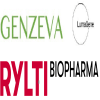Editor's note: BioPharma Dive strives to provide insight into the inner workings of the industry, giving context to the headlines. In that spirit, we have compiled data on biopharma R&D spending which we think will help support and frame our daily coverage.
These charts are updated each quarter with the release of new public data on revenues and spending. A companion article, covering drug sales, can be viewed here.
R&D Spending
R&D spending is an oft-quoted statistic in biopharma, used to illustrate company strategy and commitment to internal drug development. Too low a level of investment can be a point of criticism and scrutiny, as Valeant and other low-spending specialty pharmas have found out.
Major industry association PhRMA, aiming to blunt such attacks, recently revised its membership criteria to require companies invest at least 10% of global sales into R&D — turning out 22 drugmakers from its ranks in the process.
The first chart below depicts the year-over-year percent change in R&D expenditures from the first quarter of 2016 to the first quarter of this year for 16 leading biopharma companies.
Subsequent charts show R&D expenditures as a percent of product sales for the same group of drugmakers. The top blue bar depicts a moving average of the past four quarters, while the lower red bar shows the ratio from the most recent quarter for which public data is available.
BioPharma Dive chose to compare R&D spending to product sales, rather than top-line revenue, in an effort to more accurately reflect investment efficiency and smooth spiky boosts to top-line revenue from asset sales and collaboration revenues.

Most biopharmas in the group increased R&D spending over the past year, with a few exceptions. On average, expenditures rose by about 10%. Topline R&D spending can be skewed, however, by acquired costs or milestones charged to the R&D account.
Allergan's sharp increase, for example, was almost entirely due to the $291 million it spent in milestone and upfront licensing payments to Lysosomal Therapeutics and Editas Medicine through deals struck this past year. That sum was almost exactly $200 million more than what the Irish pharma spent on the same category a year ago.
On the other side of the ledger, Gilead saw a 26% decline year over year as one-time expenses tied to its licensing deal with Galapagos N.V. in 2016 were not repeated.

While Celgene pulls in less revenues than some of its biotech peers, it consistently allocates a high percentage towards R&D — boosted in no small part by its active approach to licensing. Stable revenues from its blockbuster Revlimid (lenalidomide) help too, bringing in a steady stream of cash to fund all those deals and research spending.
Gilead, on the other hand, has committed relatively less of its fortunes to R&D. With its window of opportunity for world-beating revenues from its hepatitis C franchise closing, investors are growing impatient. And while Gilead has a strong HIV portfolio and a lineup of candidates for other liver diseases like NASH, its pipeline is comparatively bare. Zydelig (idelalisib), its sole marketed oncology product, has so far been a commercial dud, for example.
Without as much excitement about its programs in-house, the calls for Gilead to step out in a more active way in M&A have only gotten louder.

Big pharmas are not as typically associated with high R&D spending as more narrowly focused biotechs. But Novartis and Roche, the two Swiss giants, spend roughly 20% of product revenues on research — more than some of their smaller competitors.
To be fair, that R&D spending is spread across a more varied array of businesses, such as Roche's diagnostics division. Still, the numbers may belie the general assumption.
J&J doesn't break down its R&D spending by division but, if revenues were limited only to those from its pharmaceutical business, its ratio would likely be markedly higher.

Anchored by Opdivo (nivolumab), Bristol-Myers Squibb has a deep pipeline of cancer compounds aimed at building out its presence in immuno-oncology and other areas.
Those clinical trials don't come cheap, however. Bristol-Myers spends about as much as Eli Lilly, and more than AbbVie on R&D each quarter despite earning roughly 15% and 30% less than each, respectively.

AstraZeneca is investing heavily in cancer R&D, allocating about 40% of its R&D budget towards its programs in the space. While it may be late to the immuno-oncology game, the British pharma hopes its checkpoint inhibitor Imfinzi (durvaluamb) can round out a portfolio headlined by Lynparza (olaparib) and Targrisso (osimertinib).
Sanofi has spent a relatively low 15% of product revenue on R&D in recent quarters. Yet, its partnership with Regeneron has delivered in a big way so far in 2017, with approvals for both Dupixent (dupilumab) and Kevzara (sarilumab). Both are expected to reach blockbuster status, anchoring what Sanofi hopes will be a leading immunology portfolio.





















